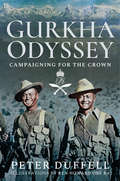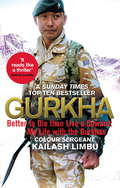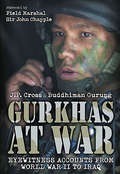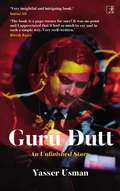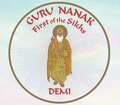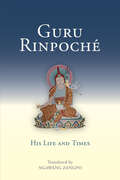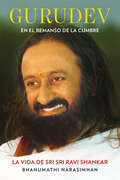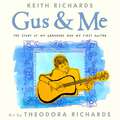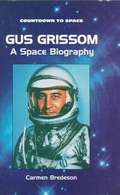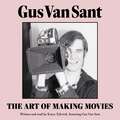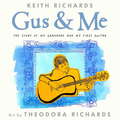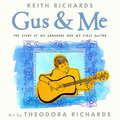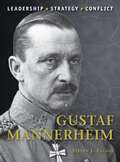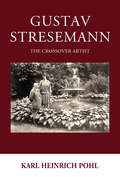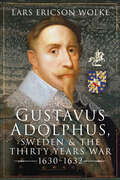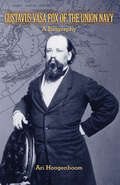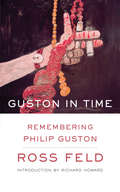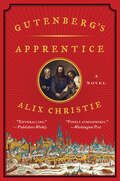- Table View
- List View
Gurkha Odyssey: Campaigning for the Crown
by Peter DuffellA British general&’s memoir of serving with these famed Nepalese warriors: &“An inspiring journey, delightfully related.&” —Times Literary Supplement It is 1814 and the Bengal Army of the Honourable East India Company is at war with a marauding Nepal. It is here that the British first encounter the martial spirit of their indomitable foe—the Gurkha hill men from that mountainous independent land. Impressed by their fighting qualities and with the end of hostilities in sight, the Company begins to recruit them into their own ranks. Since then these lighthearted and gallant soldiers have successfully campaigned wherever the British Army has served—from the North West Frontier of India through two World Wars to the contemporary battlefields of the Falklands and Afghanistan&’s Helmand Province, with well over one hundred battle honors to their name and at a cost of 20,000 casualties. Here, Peter Duffell separates fact and myth and recounts something of the history, character, and spirit of these loyal and dedicated soldiers—seen through the prism of his service and campaigning as a regular officer in the 2nd King Edward VII&’s Own Gurkha Rifles, as the Brigade of Gurkhas Major General and as Regimental Colonel of the Royal Gurkha Rifles.
Gurkha Odyssey: Campaigning for the Crown
by Peter DuffellA British general&’s memoir of serving with these famed Nepalese warriors: &“An inspiring journey, delightfully related.&” —Times Literary Supplement It is 1814 and the Bengal Army of the Honourable East India Company is at war with a marauding Nepal. It is here that the British first encounter the martial spirit of their indomitable foe—the Gurkha hill men from that mountainous independent land. Impressed by their fighting qualities and with the end of hostilities in sight, the Company begins to recruit them into their own ranks. Since then these lighthearted and gallant soldiers have successfully campaigned wherever the British Army has served—from the North West Frontier of India through two World Wars to the contemporary battlefields of the Falklands and Afghanistan&’s Helmand Province, with well over one hundred battle honors to their name and at a cost of 20,000 casualties. Here, Peter Duffell separates fact and myth and recounts something of the history, character, and spirit of these loyal and dedicated soldiers—seen through the prism of his service and campaigning as a regular officer in the 2nd King Edward VII&’s Own Gurkha Rifles, as the Brigade of Gurkhas Major General and as Regimental Colonel of the Royal Gurkha Rifles.
Gurkha: Better to Die than Live a Coward: My Life in the Gurkhas
by Alexander Norman Kailash KhebangIn the summer of 2006, Colour-Sargeant Kailash Limbu's platoon was sent to relieve and occupy a police compound in the town of Now Zad in Helmand. He was told to prepare for a forty-eight hour operation. In the end, he and his men were under siege for thirty-one days - one of the longest such sieges in the whole of the Afghan campaign. Kailash Limbu recalls the terrifying and exciting details of those thirty-one days - in which they killed an estimated one hundred Taliban fighters - and intersperses them with the story of his own life as a villager from the Himalayas. He grew up in a place without roads or electricity and didn't see a car until he was fifteen. Kailash's descriptions of Gurkha training and rituals - including how to use the lethal Kukri knife - are eye-opening and fascinating. They combine with the story of his time in Helmand to create a unique account of one man's life as a Gurkha.
Gurkha: Better to Die than Live a Coward: My Life in the Gurkhas
by Colour-Sergeant Kailash LimbuIn this Sunday Times Top Ten bestselling memoir that 'reads like a thriller', (Joanna Lumley) Colour-Sargent Kailash Limbu shares a riveting account of his life as a Gurkha soldier-marking the first time in its two-hundred-year history that a soldier of the Brigade of Gurkhas has been given permission to tell his story in his own words.In the summer of 2006, Colour-Sargeant Kailash Limbu's platoon was sent to relieve and occupy a police compound in the town of Now Zad in Helmand. He was told to prepare for a forty-eight hour operation. In the end, he and his men were under siege for thirty-one days - one of the longest such sieges in the whole of the Afghan campaign.Kailash Limbu recalls the terrifying and exciting details of those thirty-one days - in which they killed an estimated one hundred Taliban fighters - and intersperses them with the story of his own life as a villager from the Himalayas. He grew up in a place without roads or electricity and didn't see a car until he was fifteen.Kailash's descriptions of Gurkha training and rituals - including how to use the lethal Kukri knife - are eye-opening and fascinating. They combine with the story of his time in Helmand to create a unique account of one man's life as a Gurkha. 'I was completely bowled over by Kailash's book and read it with a beating heart and dry mouth. I felt as though I was at his side, hearing the shells and bullets, enjoying the jokes and listening in the scary dead of night. The skill with which he has included his childhood and training is immense, always discovered with ease in the narrative: it actually felt as though I was watching, was IN a film with him. It brought me nearer than I have ever been not only to the mind of the universal soldier but to a hill boy of Nepal and a hugely impressive Gurkha. I raced through it and couldn't put it down: it reads like a thriller. If you want to know anything about the Gurkhas, read this book, and be prepared for a thrilling and dangerous trip' Joanna Lumley
Gurkhas at War: Eyewitness Accounts from World War II to Iraq
by J.P. Cross Buddhiman Gurung Chapple John Foreword byIs indepth interviews with Gurkhas soldiers past and present, depicts key military campaigns of the 20th century in the words of the men who were there. From WW2 to the present day, these eyewitness accounts include the lengthy battles against the Japanese in Burma, the action against communist rebebels in Malaya and Hong Kong, plus morerecent deployment of Gurkhas in the Falklands, Gulf, Balkans and East Timor.
Guru Arjan Dev
by Mohinder Singh JoshiThis book is a biography of Guru Arjan Dev, the Fifth Sikh Guru, and also discusses his works.
Guru Dutt: An Unfinished Story
by Mr. Yasser UsmanGuru Dutt&’s filmography has some names which have long been considered as some of the best films to have ever been made in India. His masterpiece Pyaasa (1957) was featured in TIME magazine's All-Time 100 Movies list in 2005. His films are still celebrated and revered by viewers, critics and students of cinema the world over, not only for their technical brilliance but also for the eternal romanticism and their profound take on the emptiness of life and the shallowness of material success. He was Indian cinema&’s Don Juan and Nietzsche rolled into one. But while much has been said and written on the film-maker and his art, little is known about his life behind the screens. This richly layered account takes a deep dive into the journey of a lonesome, troubled genius who was endlessly being pulled in contrary directions throughout his life. A child prodigy, who actually began as a dancer learning from the great Uday Shankar, an unconventional film-maker who desired commercial success without ever compromising on artistic satisfaction, a self-made entrepreneur who hated numbers yet single-handedly ran a film studio juggling the roles of a producer, director, actor, financier — all this while struggling silently with a deeply troubled personal life, at the centre of which was his tumultuous marriage with Geeta Dutt. Guru had it all — love, family, money, fame and validation from his audience. His untimely death by suicide, that too after multiple failed attempts, had shocked the entire film industry. But what led to that fateful night when he tipped his hat and said his final goodbye? Best-selling Bollywood biographer Yasser Usman explores the man and the myth Guru Dutt in this definitive biography of a nonconformist star, uncovering the extraordinary lives of the rich and the famous as well the incredible toll it takes on the emotional and mental health of a human being. With cameos from close friends and colleagues Dev Anand, Waheeda Rehman, Johnny Walker, S.D. Burman and most significantly Dutt&’s sister, noted painter Lalitha Lajmi, a short but compassionate, ambitious and ultimately tragic life reveals itself in the pages of this book. This is a gripping, meticulously researched and moving portrait of an unfinished life — a tale of unrequited love, unresolved relationships and unmatched cinematic talent.
Guru Nanak
by Gurbachan Singh TalibThis book is about the life history of Guru Nanak, the founder of Sikh religion.
Guru Nanak: First of the Sikhs
by DemiGuru Nanak (1469-1539), the founder of the Sikh religion, is the first in a line of ten enlightened gurus, or teachers, whose writings form the sacred scripture of Sikhism. Born into a humble Hindu family, Nanak was an extraordinary child who from a young age questioned the rituals of religion and the ways of the world around him. At the age of twenty-seven, he embarked on an inspired mission that took him from the sacred Himalayas in India, Nepal, and Tibet to the holy city of Mecca in Arabia. Throughout his twenty-five-year travels, Guru Nanak preached a message of one God, sincere worship, and of peace and equality for all. Today the Sikh religion numbers as many as 25 million followers worldwide and Guru Nanak is revered by Hindus and Muslims alike. Award-winning author, Demi, recounts his spiritual journey, showing how the essential teachings of Sikhism are expressed through Guru Nanak's remarkable life and in his poetry.
Guru Rinpoche: His Life and Times
by Ngawang ZangpoTo Tibetan Buddhists, Guru Rinpoche is a Buddha. This book recounts Guru Rinpoche's historic visit to Tibet and explains his continuing significance to Buddhists. In doing so, it illustrates how a country whose powerful armies overran the capital of China and installed a puppet emperor came to abandon its aggressive military campaigns: this transformation was due to Guru Rinpoche, who tamed and converted Tibet to Buddhism and thereby changed the course of Asian history. Four very different Tibetan accounts of his story are presented: one by Jamgon Kongtrul; one according to the pre-Buddhist Tibetan religion Bön, by Jamyang Kyentse Wongpo; one based on Indian and early Tibetan historical documents, by Taranata; and one by Dorje Tso. In addition, there are supplications by Guru Rinpoche and visualizations to accompany them by Jamgon Kongtrul. Guru Rinpoche is part of The Tsadra Foundation series published by Snow Lion Publications. The Tsadra Foundation takes its inspiration from the nineteenth-century nonsectarian Tibetan scholar and meditation master Jamgon Kongtrul Lodro Taye, and is named after his hermitage in eastern Tibet, Tsadra Rinchen Drak. The Foundation's programs reflect his values of excellence in both scholarship and contemplative practice, and a recognition of their mutual complementarity.
Guru Tegh Bahadur
by Mohindar Pal KohliThe book is about the ninth Guru of the Sikhs and he was God in the form of a human.
Gurudev en el remanso de la cumbre: La vida de Sri Sri Ravi Shankar
by Bhanumathi NarasimhanCon la mirada amorosa y cercana de su hermana, estas páginas nos transportan a eventos clave que marcaron la vida de Sri Sri Ravi Shankar, fundador de El Arte de Vivir. Además, reconstruye cómo fue que se forjó una personalidad con una misión clara: la dedicación inquebrantable, un amor incondicional y un compromiso incansable con el bienestar de los demás. «Tú nunca podrás encontrarte con Dios. Cuando lo conoces, te esfumas. Solo Dios permanece».Gurudev A través de la mirada amorosa y cercana de su hermana, Bhanumathi Narasimhan, estas páginas nos transportan a los eventos clave que marcaron la vida de Sri Sri Ravi Shankar, el fundador de El Arte de Vivir. Tenemos la gratificante posibilidad de asistir a cómo fue que se forjó una personalidad con una misión clara: la dedicación inquebrantable, un amor incondicional y un compromiso incansable con el bienestar de los demás. Su infancia en la India, su joven adultez con Maharishi Mahesh Yogi, su fanatismo por la comedia Yo amo a Lucy, los primeros cimientos de su obra, su compromiso a difundir la paz, la armonía y la conciencia en todo el mundo son algunos de los acontecimientos que convirtieron a Sri Sri Ravi Shankar en lo que es hoy: un líder espiritual que toca el corazón de millones de personas, inspirándolas a buscar un mundo mejor y más pacífico.
Gus & Me
by Keith Richards Theodora RichardsLong before there was a band, there was a boy: a young Keith Richards, who was introduced to the joy of music through his beloved granddad, Theodore Augustus Dupree, affectionately known as "Gus," who was in a jazz big band and is the namesake of Keith's daughter, Theodora Dupree Richards. Gus & Me offers a rare and intimate look into the childhood of the legendary Keith Richards through this poignant and inspiring story that is lovingly illustrated with Theodora Richards's exquisite pen-and-ink collages. This unique autobiographical picture book honors the special bond between a grandfather and grandson and celebrates the artistic talents of the Richards family through the generations. It also includes selected photographs from the Richards family collection and Read-Aloud functionality where available.
Gus Grissom
by Carmen BredesonFills the need for high-interest biographies on astronauts, inspiring manned spaceflights, and planets. Answers the call for books in the space curriculum.
Gus Van Sant: The Art of Making Movies
by Katya TylevichThe first book to talk about the creative process of one of Hollywood's most iconic directorsFrom Drugstore Cowboy to Elephant, Milk and Good Will Hunting, Gus Van Sant's films have captured the imagination of more than one generation. Acclaimed as both an independent and mainstream filmmaker, he is also an artist, photographer and writer. Based on completely new and exclusive interviews, and featuring previously unseen imagery, this book provides a personal insight into how Van Sant successfully approaches these different and varied artforms, providing an inspirational look into the working life of one of America's most pivotal cultural and creative practitioners.
Gus and Me: The Story Of My Granddad And My First Guitar
by Keith RichardsKeith's grandfather, Theodore Augustus Dupree lived near Seven Sisters Road, in a house filled with instruments and cakes. A nostalgic look back at happy childhood days as the Rolling Stone star remembers his grandfather - a former big band player who encouraged his grandson to take up the guitar, in this charming picture book whimsically illustrated by Keith Richards' daughter.
Gus and Me: The Story Of My Granddad And My First Guitar
by Keith RichardsKeith's grandfather, Theodore Augustus Dupree lived near Seven Sisters Road, in a house filled with instruments and cakes. A nostalgic look back at happy childhood days as the Rolling Stone star remembers his grandfather - a former big band player who encouraged his grandson to take up the guitar, in this charming picture book whimsically illustrated by Keith Richards' daughter.
Gustaf Mannerheim
by Steven J. ZalogaCarl Gustaf Emil Mannerheim is a legendary figure, whose life and career were deeply influential in Finnish and European history. He is viewed by many as the father of modern Finland after leading the 'White' faction to victory and independence in the Finnish Civil War of 1918. That conflict preceded a sequence of bitter clashes between Finland, Soviet Russia and Nazi Germany in the buildup to, and during, World War II: The Winter War in 1940, the Continuation War and the Lapland War in 1944-45. Throughout these fierce clashes in the ice and snow, Mannerheim managed his forces with great skill, even though the initiative was to swing back and forth between the adversaries. This study provides a fascinating insight into Mannerheim's career, analysing his traits, his biggest victories and his key enemies. Complete with uniform artwork and detailed tactical maps, it is a comprehensive guide to one of history's most capable military leaders and statesmen.
Gustav Stresemann: The Crossover Artist (Studies in German History #23)
by Karl Heinrich PohlAs a foreign minister and chancellor of Weimar Germany, Gustav Stresemann is a familiar figure for students of German history – one who, for many, embodied the best qualities of German interwar liberalism. However, a more nuanced and ambivalent picture emerges in this award-winning biography, which draws on extensive research and new archival material to enrich our understanding of Stresmann’s public image and political career. It memorably explores the personality of a brilliant but flawed politician who endured class anxiety and social marginalization, and who died on the eve of Germany’s descent into economic and political upheaval.
Gustavus Adolphus, Sweden and the Thirty Years War, 1630–1632
by Lars Ericson WolkeThe little-known story of the Swedish king and military commander who conquered much of Germany in the early seventeenth century. As one of the foremost military commanders of the early seventeenth century, Gustavus Adophus, king of Sweden, played a vital role in defending the Protestant cause during the Thirty Years War. In the space of two years—between 1630 and 1632—he turned the course of the war, winning a decisive victory at the Battle of Breitenfeld and conquering large parts of Germany. Yet remarkably little has been written about him in English, and no full account of his extraordinary career has been published in recent times. That is why this perceptive and scholarly study is of such value. The book sets Gustavus in the context of Swedish and European dynastic politics and religious conflict in the early seventeenth century, and describes in detail Swedish military organization and Gustavus&’s reforms. His intervention in the Thirty Years War is covered in graphic detail—the decision to intervene, his alliance with France, his campaigns across the breadth of Germany, and his generalship at the two major battles he fought there. His exceptional skill as a battlefield commander transformed the fortunes of the Protestant side in the conflict, and he had established himself as a major European figure before his death on the battlefield. Lars Ericson Wolke, one of the leading experts on the military history of the Baltic and the Thirty Years War, offers a fascinating insight into Gustavus the man and the soldier.
Gustavus Vasa Fox of the Union Navy: A Biography
by Ari HoogenboomThis magisterial biography recounts the life and career of one of the U.S. Navy’s most influential officers, Gustavus Vasa Fox. Ari Hoogenboom's examination of Fox's incredible life and distinguished career creates a vivid portrait of the man most responsible for the U.S. Navy's stellar performance in the Civil War. Fox’s naval service began in 1838 when he went to sea as a midshipman. He sailed in the Mediterranean, off the coast of Africa, in the Gulf of Mexico, and with the East India Squadron in the Pacific. By participating in the Coast Survey and by navigating the lower Mississippi River in the 1850s, as captain of a steamer that ran from New York to Havana to New Orleans and back, Fox gained valuable experience that would serve him well in the Civil War.During the war, Fox was instrumental in mounting the blockade of the southern coast, from the Chesapeake Bay to the Rio Grande. After the battle between the Monitor and the Virginia, Fox championed ironclad technology despite having to contend with an officer corps wedded to wooden ships. In planning and coordinating expeditions, Fox deserves much of the credit for the navy's successes at Hatteras, Port Royal, New Orleans, Mobile Bay, and Fort Fisher.Initially neither proslavery nor antislavery, Fox was passionately committed to the preservation of the Union and, as black sailors made a crucial contribution toward that end, became an advocate of freedom and voting rights for African Americans. A skilled administrator who understood both the demands of politicians and the needs of line officers, he was able to communicate effectively with each group. Fox developed a close and collegial working relationship with Abraham Lincoln and was related by marriage to the postmaster general. Along with officers like Quartermaster General Montgomery Meigs and coordinator of military railroads Herman Haupt, Fox played a critical but underappreciated role in the Union victory.
Gustavus Vasa Fox of the Union Navy: A Biography
by Ari HoogenboomThis “fine, perhaps definitive, biography” of the man who guided the U.S. Navy’s stellar Civil War campaigns “should be on every naval bookshelf” (Washington Times).Gustavus Vasa Fox began his naval service in 1838, when he went to sea as a midshipman. He sailed in the Mediterranean, off the coast of Africa, in the Gulf of Mexico, and with the East India Squadron in the Pacific. His experiences working on the Coast Survey, navigating the lower Mississippi River, and captaining a steamer that ran from New York to Havana to New Orleans and back, would all prove invaluable in the Civil War.During the war, Fox was instrumental in mounting the blockade of the southern coast, from the Chesapeake Bay to the Rio Grande. In planning and coordinating expeditions, Fox deserves much of the credit for the navy’s successes at Hatteras, Port Royal, New Orleans, Mobile Bay, and Fort Fisher.Passionately committed to preserving the Union, Fox also became an advocate of freedom and voting rights for African Americans. He was a skilled administrator who understood politics and developed a close working relationship with Abraham Lincoln. Along with officers like Quartermaster General Montgomery Meigs and coordinator of military railroads Herman Haupt, Fox played a critical but overlooked role in the Union victory.
Guston in Time: Remembering Philip Guston
by Ross FeldIn the years following his controversial 1970 exhibition at the Marlborough Galleries, Philip Guston was generally viewed as yesterday's scandal, a maverick who had abandoned abstract expressionism and, with it, the adulation of the art world. Few paid serious attention to the disturbing, profound work he was producing in his Woodstock studio. So when Ross Feld, a young novelist and critic, wrote a penetrating review of Guston's latest show, the artist sent him a letter of appreciation: "I felt . . . as if we knew each other and had many discussions about painting and literature. In a word—I felt recognition."Thus began a remarkable friendship. Feld, a frequent visitor to Guston's studio where the two men would talk late into the night, became Guston's intellectual sparring partner and sounding board—"I'll shout it right out," Guston wrote to Feld, "you inspire me to paint again!"—as well as the artist's most eloquent critic and champion. Guston in Time is Feld's final tribute, and it is at once a testament to a friendship, a provocative and richly nuanced study of one of the twentieth century's most important artists, and a portrait of a remarkable character.
Guston in Time: Remembering Philip Guston
by Ross FeldIn this warm and vibrant work of memoir and criticism, a young writer forges a friendship with Philip Guston, one of the most influential and controversial painters of the twentieth century.The late work of Philip Guston has had a profound influence on painters today, but as Guston&’s star has risen, it has been forgotten how scandalous these paintings, with their cartoonish imagery and almost fumbling application of paint, were initially deemed to be. The 1970 show at the Marlborough Gallery in which Guston, abandoning the delicate abstract expressionism for which he was known, revealed his new style, was critically savaged. In the aftermath of this drubbing, he retreated to his studio in Woodstock, New York—in part to nurse his wounds but, more important, to go on painting exactly as he saw fit.Ross Feld, a young poet, novelist, and critic, was one of the rare critics to respond favorably to Guston&’s late work. Guston answered with a grateful note, and a new friendship was soon born. Guston in Time, written not long before Feld&’s early death from cancer, is a portrait of Guston the man; and of his wife, Musa, a major figure not only in his life but in his work; a reckoning with his supremely individual achievement as an artist; and a work of art in its own right.A retrospective of Guston&’s work, Philip Guston Now, will be on view at the Museum of Fine Arts, Boston, from May 1 to September 11, 2022; at the Museum of Fine Arts, Houston, from October 23, 2022, to January 15, 2023; at the National Gallery of Art, Washington, D.C., from February 26 to August 27, 2023; and at the Tate Modern, London, from October 3, 2023 to February 4, 2024.
Gutenberg's Apprentice: A Novel
by Alix ChristieA novel about the birth of the printing press “spotlights intriguing parallels between 15th-century Europe and the digital media of the twenty-first-century world” (The New York Times Book Review).Youthful, ambitious Peter Schoeffer is on the verge of professional success as a scribe in Paris when his foster father, wealthy merchant and bookseller Johann Fust, summons him home to corrupt, feud-plagued Mainz to meet “a most amazing man.”Johann Gutenberg, a driven and caustic inventor, has devised a revolutionary—and to some, blasphemous—method of bookmaking: a machine he calls a printing press. Fust is financing Gutenberg’s workshop and orders Peter, his adopted son, to become Gutenberg’s apprentice. Resentful at having to abandon a prestigious career as a scribe, Peter begins his education in the “darkest art.”As his skill grows, so, too, does his admiration for Gutenberg and his dedication to their daring venture: copies of the Holy Bible. But mechanical difficulties and the crushing power of the Catholic Church threaten their work. Caught between the genius and the merchant, old ways and new, Peter and the men he admires must prevail against overwhelming obstacles—a battle that will change history, and irrevocably transform them. This enthralling literary novel evokes one of the most momentous events in history in a story of invention, intrigue, and betrayal, rich in atmosphere and detail, told through the lives of the three men who made the printing press possible.“[A] stellar debut . . . masterful.” —Historical Novel Society“Enthralling.” —Publishers Weekly (starred review)“Atmospheric . . . a worthy tribute to the technological revolution it reimagines, as well as a haunting elegy to the culture of print . . . One thinks of Donna Tartt’s obsessive accounts of furniture decoration in The Goldfinch or even Philip Roth’s lovingly twisted empathy with glovemaker Swede Levov in American Pastoral. Such novels of craft and specialization take a writerly delight in the most intricate details of a particular trade while spinning rich prose out of its mysterious threads.” —The Washington Post
